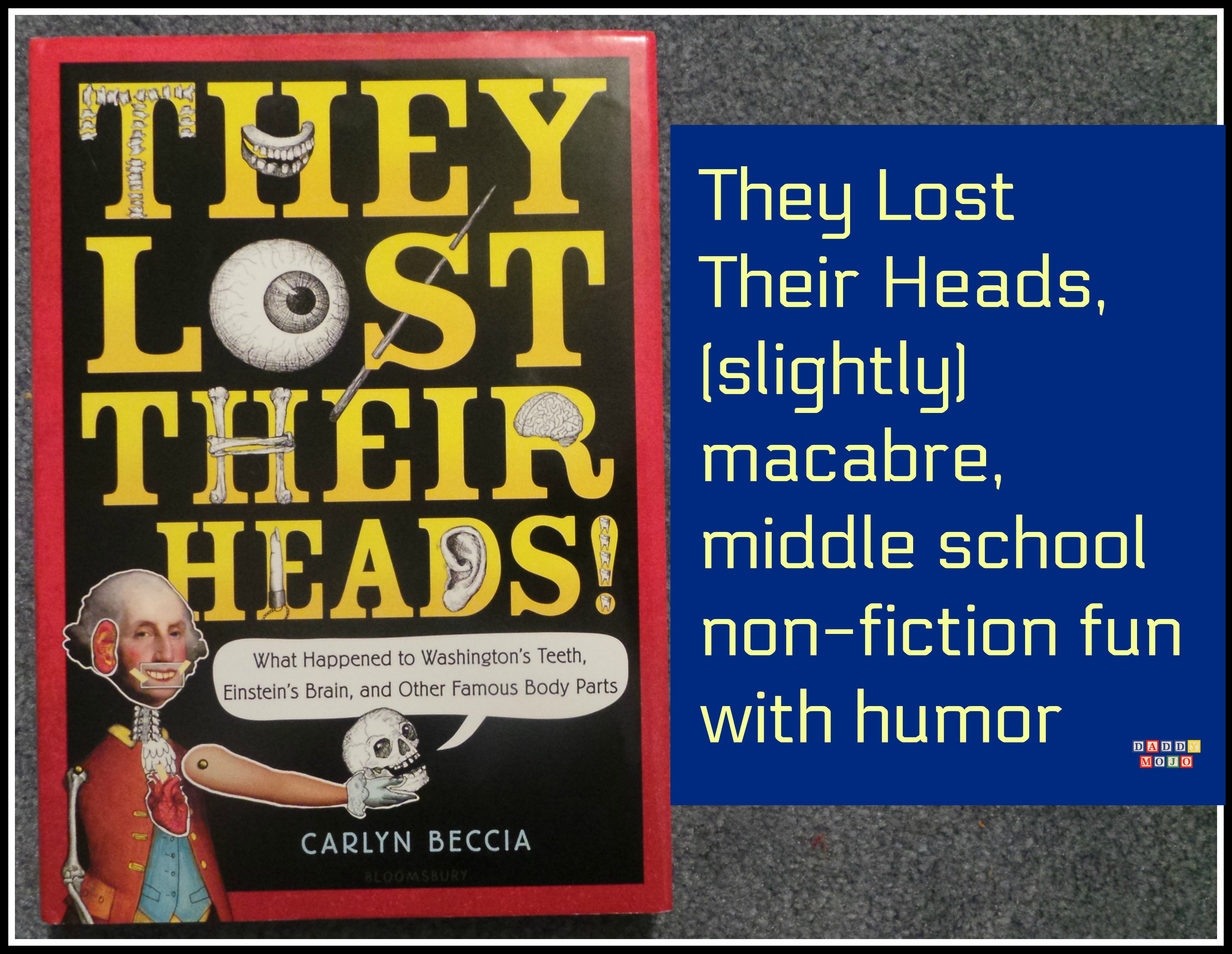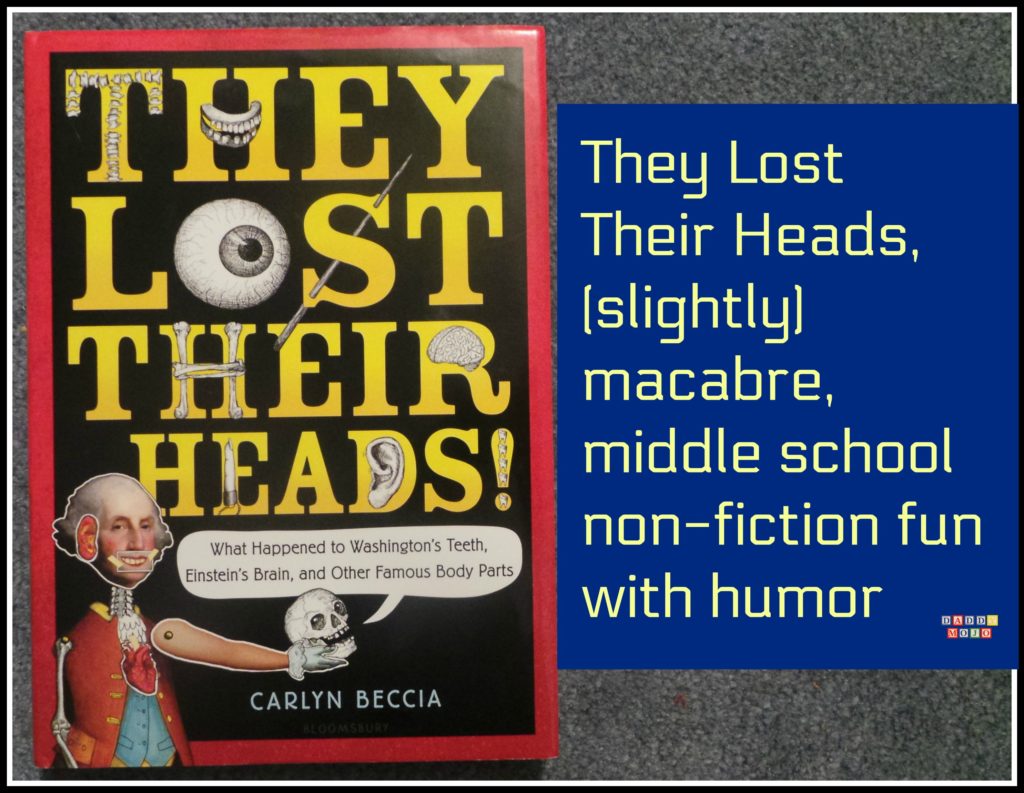When I was a kid I loved reading books like this. Now that I’m an adult I still enjoy reading books like They Lost Their Head, What Happened to Washington’s Teeth, Einstein’s Brain and other Famous Body Parts. Author Carlyn Beccia blends a surprising amount of wit and humor into a book that alternately entertains and educates at every turn. It does this all while respecting, as much as one can, the fact that every story in the book revolves around someone’s death.
The vocabulary in They Lost Their Heads will be appropriate for upper elementary school kids. Whether or not they can-or want to handle a book that frankly speaks about death, autopsies and medical knowledge is another matter. If I were an 11 year old kid I would be fascinated by this book and would be OK with everything described in it.
They Lost Their Heads is broken up by many small chapters that look at famous deceased people and the curious circumstances that surrounded their death, burial (or lack thereof) and the way that the living world treated parts of their body. Its presentation adds to the entertainment, pacing and education that you’ll receive from the book.
For example Franz Joseph-Haydn the composer who lived in the 1700’s had a problem with his skull being moved around after he died. Unfortunately for Haydn, he died just as the French invasion of Austria was happening and there was a very eager and curious Phrenologist who wanted to study his head. Decades later the war ended and Haydn’s legacy as a composer grew so the mayor wanted to properly honor his work by properly burying him. Word got out through the grapevine and the researcher who stole it gave the city a different skull. Still more decades passed and the thief, on his deathbed, told people where the real skull was located.
Unfortunately, the newly deceased thief’s doctor stole Haydn’s head and the case wasn’t solved until the mid 1800’s as to who should properly hold the skull. Said skull was sent to The Society of the Friends of Music…until the mid 1900’s when Hyden’s family convinced the organization to return the skull to the already buried body who still had the foreign head semi-attached to it. Mercifully, they decided to let the stranger’s skull remain in the grave, which left Hyden’s body with two heads, buried in a church in Austria.
Beccia follows that story up with a brief history about Phrenology, which is the study of bumps on one’s head. You know that phrase about smart people ‘having a big head’? It turns out that comes from centuries of doctors, some more legit than others, who were measuring heads and feeling the bumps.
Each story that highlights a person is about six pages long, with a couple then devoted to more curious facts about the previously spoken about body part. These are not common stories and will utterly entertain you with fascinating facts or trivial knowledge, depending on your interest level or what you do for a living.
Younger readers will also enjoy the various, usually comedic illustrations that accompany most pages. It’s also a funny book, but not in a morose manner, which is astounding when you consider that the topic for each mini-story is a dead person. It’s more of a fascinating, how-can-this-possibly-be-true way that leaves readers shaking their heads in disbelief. Middle school students and up will enjoy this non-fiction book that looks at a segment of history most students otherwise wouldn’t give a second glance to.






 Facebook
Facebook Twitter
Twitter Flickr
Flickr GooglePlus
GooglePlus Youtube
Youtube